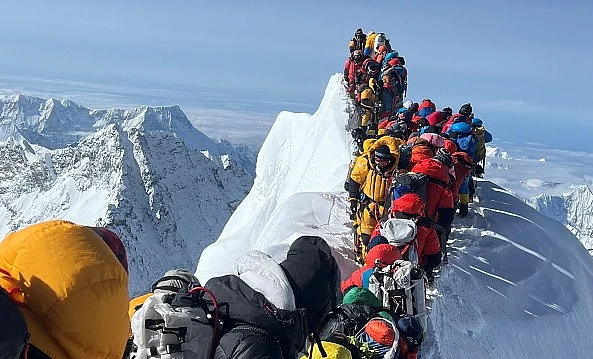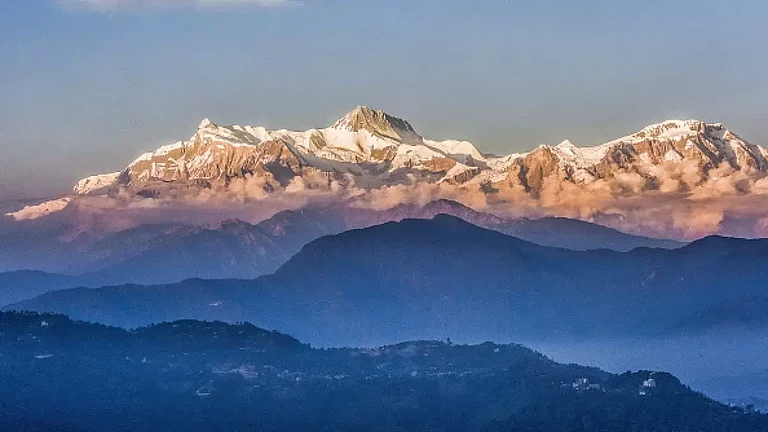The thrill of mountain climbing draws many adventure seekers but often people forget that scaling such heights is not everyone’s cup of tea. Seventy-one years since Nepal’s Tenzing Norgay and New Zealander Edmund Hillary stood atop Mount Everest – world’s highest mountain – in 1953, more than 8,000 people have scaled it.
Once only accessible to well-heeled elite mountaineers, over the past decade, Nepal’s booming climbing market has driven down the cost of an expedition, opening Everest up to hobbyists and adventure-seekers – leading to what is known as commercial mountaineering. Climbers now require a doctor’s note deeming them physically fit but not to prove their stamina at such extreme heights.
As a result, with a narrow window of the spring summit season opened which lasts between April and May, the generation that seeks instant gratification has woken up once again to this phenomenon with their potentially fatal mix of high disposable income, shifty personal ambitions and lack of necessary preparatory effort, paving the way for a long queue of ego-tourists at the top of the world. Not only is this overcrowding the tallest peak and raising competition, but the inadequate vetting of rookie climbers is also causing many deaths.
Rising deaths at Everest
In 2019, a striking photo clicked by record-holding mountaineer Nirmal Purja attracted attention around the world to the rising deaths on Everest, located in the Mahalangur Himal sub-range of the Himalayas in Nepal. According to the guides, this happens quite often during the summit season. A similar photo was clicked by German climber Ralf Dujmovits In 2012 which had also gone viral showing what he called a "conga line" of mountaineers at Everest.
Earlier this month, several videos circulated on social media showing a snarl of climbers on the summit ridge although fewer permits were issued this year compared to the previous years.
Altogether, 414 climbers from 41 expeditions acquired permission to scale the 8,848.86 m-tall peak this season. At least five people have died.
The latest was an Indian. Banshi Lal, 46, died at a Kathmandu hospital on May 28 after being evacuated from base camp with AMS, although the precise cause of death was not disclosed. He was climbing with 8K Expeditions. The other four deaths include a Nepali sherpa, a Kenyan and two Mongolian citizens. Meanwhile, three more individuals – a British climber and two more Nepali sherpas are listed as missing but presumed dead. In 2023, eighteen climbers had died trying to scale the tallest mountain.
At a height where oxygen is already limited, when people have to wait in queues, they risk running out of oxygen. Every minute counts there,” said Eric Murphy, a mountain guide from Bellingham, Washington, told the Associated Press.
Environmental concerns
Mount Everest was elusive to humankind for most of the 20th century. However, since the first summiting in 1953, the subsequent decades have only witnessed a trickle of mountaineers scaling the peak resulting in more debris and garbage.
With the changing climate, more glaciers are depleting, temperatures are rising, and extreme rainfall events are increasing, which is a cause of worry for the people whose livelihoods are at stake. The growing popularity of Everest further adds to the mess in one of the most fragile ecosystems of the region. Heaps of garbage surfaces every time the ice and snow melt from the peak adding to the risks involved in climbing the tallest peak.
There have been clean-up campaigns on the mountain almost every year. A team of Nepali soldiers were still on the mountain picking up trash left behind by previous expeditions. “It is very necessary to immediately direct our attention to this,” Sherpa guide Kami Rita, who has scaled Mount Everest a record 30 times, tells PTI.
Sustainable expeditions and reducing the number of climbers are the need of the hour. It is also the only way to keep the thrill of being at the top of the world, literally.

















